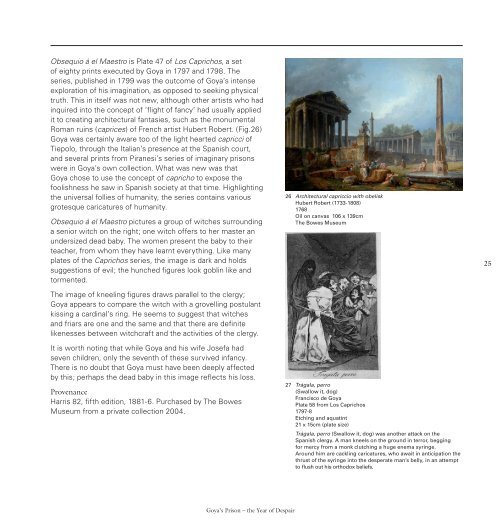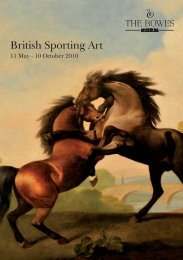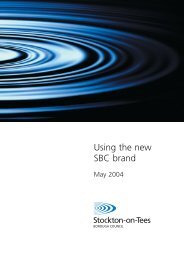You also want an ePaper? Increase the reach of your titles
YUMPU automatically turns print PDFs into web optimized ePapers that Google loves.
Obsequio á el Maestro is Plate 47 of Los Caprichos, a set<br />
of eighty prints executed by Goya in 1797 and 1798. The<br />
series, published in 1799 was the outcome of Goya’s intense<br />
exploration of his imagination, as opposed to seeking physical<br />
truth. This in itself was not new, although other artists who had<br />
inquired into the concept of ‘flight of fancy’ had usually applied<br />
it to creating architectural fantasies, such as the monumental<br />
Roman ruins (caprices) of French artist Hubert Robert. (Fig.26)<br />
Goya was certainly aware too of the light hearted capricci of<br />
Tiepolo, through the Italian’s presence at the Spanish court,<br />
and several prints from Piranesi’s series of imaginary prisons<br />
were in Goya’s own collection. What was new was that<br />
Goya chose to use the concept of capricho to expose the<br />
foolishness he saw in Spanish society at that time. Highlighting<br />
the universal follies of humanity, the series contains various<br />
grotesque caricatures of humanity.<br />
Obsequio á el Maestro pictures a group of witches surrounding<br />
a senior witch on the right; one witch offers to her master an<br />
undersized dead baby. The women present the baby to their<br />
teacher, from whom they have learnt everything. Like many<br />
plates of the Caprichos series, the image is dark and holds<br />
suggestions of evil; the hunched figures look goblin like and<br />
tormented.<br />
The image of kneeling figures draws parallel to the clergy;<br />
Goya appears to compare the witch with a grovelling postulant<br />
kissing a cardinal’s ring. He seems to suggest that witches<br />
and friars are one and the same and that there are definite<br />
likenesses between witchcraft and the activities of the clergy.<br />
It is worth noting that while Goya and his wife Josefa had<br />
seven children, only the seventh of these survived infancy.<br />
There is no doubt that Goya must have been deeply affected<br />
by this; perhaps the dead baby in this image reflects his loss.<br />
Provenance<br />
Harris 82, fifth edition, 1881-6. Purchased by The Bowes<br />
Museum from a private collection 2004.<br />
26 Architectural capriccio with obelisk<br />
Hubert Robert (1733-1808)<br />
1768<br />
Oil on canvas 106 x 139cm<br />
The Bowes Museum<br />
27 Trágala, perro<br />
(Swallow it, dog)<br />
Francisco de Goya<br />
Plate 58 from Los Caprichos<br />
1797-8<br />
Etching and aquatint<br />
21 x 15cm (plate size)<br />
Trágala, perro (Swallow it, dog) was another attack on the<br />
Spanish clergy. A man kneels on the ground in terror, begging<br />
for mercy from a monk clutching a huge enema syringe.<br />
Around him are cackling caricatures, who await in anticipation the<br />
thrust of the syringe into the desperate man’s belly, in an attempt<br />
to flush out his orthodox beliefs.<br />
25<br />
Goya’s <strong>Prison</strong> – the Year of Despair






